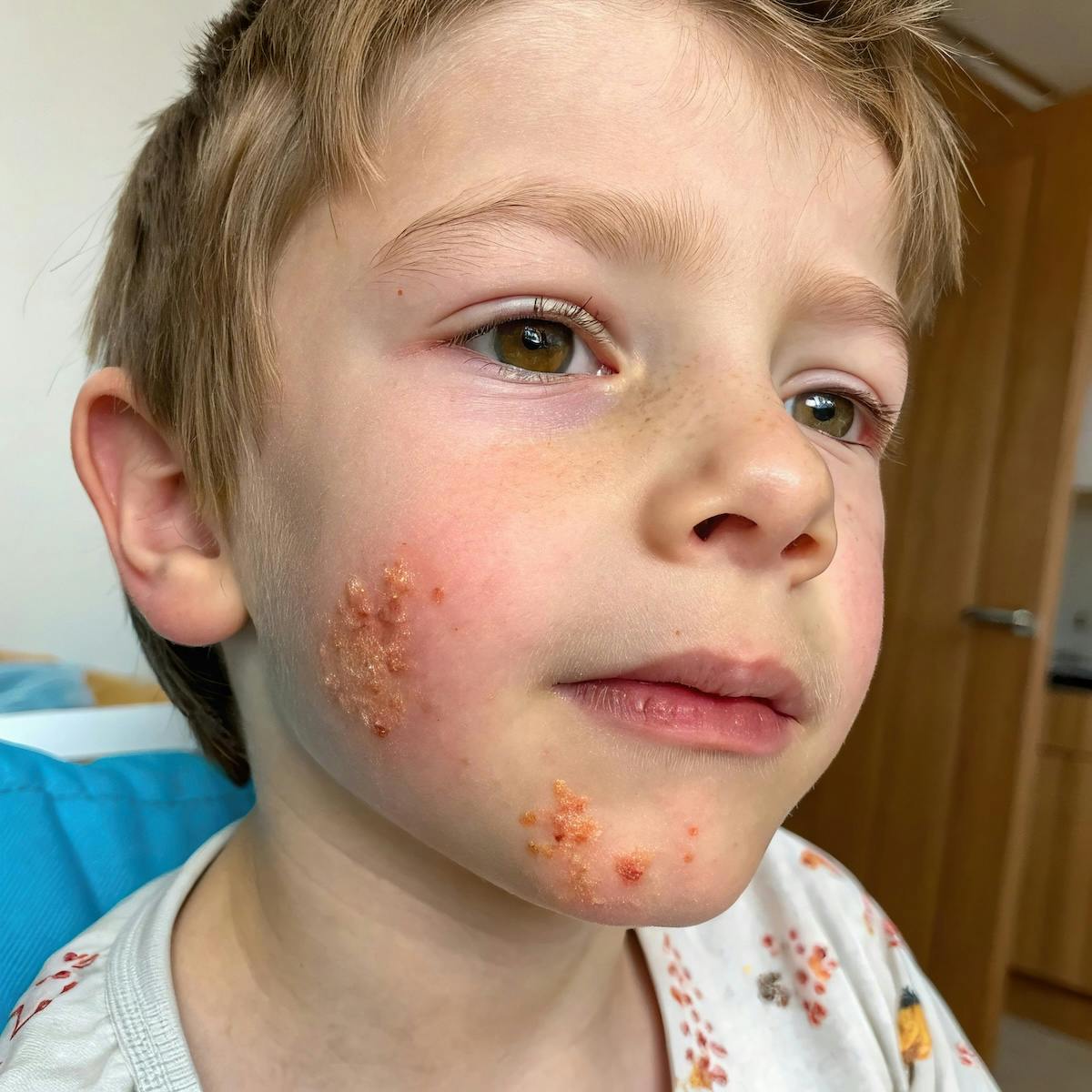As a parent, it’s natural to worry when your child shows signs of a skin infection. One common condition that often affects children is impetigo (also called school sores) — a highly contagious bacterial infection that can cause a rash, blisters, and discomfort. At Doctors on Demand, we want to ensure you feel confident and informed when it comes to your child’s health, so here is some helpful information about impetigo.
What is impetigo?
Impetigo (also known as “school sores”) is a bacterial skin infection that is commonly found in children, although it can affect people of all ages. The infection typically affects areas of the skin that are already broken or irritated, like cuts, insect bites, or rashes. The infection is caused by either Streptococcus or Staphylococcus bacteria, which thrive on the skin and can spread quickly, especially in close-contact settings like schools or daycare centers.
How to spot impetigo in children
The most common symptom of impetigo is a rash that usually begins as red sores or blisters. Here’s what to look for:
- Red sores: These typically appear around the nose, mouth, and other parts of the face but can spread to other areas of the body.
- Blisters: The sores may quickly turn into blisters that burst open, releasing a yellowish, crusty fluid.
- Crusting: After the blisters break, a thick, golden-brown crust forms, making it easy to identify the condition.
- Itchiness or discomfort: The infected area may feel sore, and your child might scratch the rash, making it worse or spreading the infection.
Impetigo is highly contagious, so it’s important to take steps to prevent it from spreading to others or worsening.
How does impetigo spread?
Impetigo spreads through direct contact with the sores or the fluid that comes from them. It can also spread through towels, clothing, or other personal items that have come into contact with the infection. Children who come into close contact with other kids, such as in school, daycare, or sports, are especially at risk.
What are the treatment options for impetigo?
Fortunately, impetigo can be treated effectively with medical intervention. Treatment options may include:
1. Topical Antibiotics
For mild cases of impetigo, your doctor may prescribe a topical antibiotic ointment. This ointment is applied directly to the affected area and can help clear up the infection within a few days.
2. Oral Antibiotics
If the infection is more severe or widespread, your doctor may recommend oral antibiotics to fight the bacteria from within. These are typically prescribed if the infection has spread to multiple areas or doesn’t improve with topical treatments.
3. Good Hygiene Practices
To help prevent the spread of impetigo and support healing, you should encourage your child to:
- Wash their hands frequently with soap and water.
- Avoid touching or scratching the rash to prevent it from spreading.
- Keep the infected areas clean and covered to avoid contact with others.
- Launder clothing and towels that may have come into contact with the rash.
Can I receive treatment for impetigo via telehealth?
We understand that getting to a doctor’s office with a sick child can sometimes be a hassle, especially during busy times. Fortunately, with Doctors on Demand, we’re available 24/7 for telehealth appointments, allowing you to book an appointment with a healthcare professional from the comfort of your own home. Whether you’re unsure about the symptoms or want to discuss options to treat impetigo, our trusted 24/7 telehealth services make it easier than ever to get the care you need.
Our Australian-registered doctors can evaluate your child’s symptoms virtually, offer guidance on managing impetigo at home, and prescribe treatments if necessary. Doctors on Demand makes it possible to avoid the stress of waiting in a clinic and to get fast, reliable advice when you need it most.
When to seek medical attention
Impetigo in children is a common but manageable condition. With proper treatment and good hygiene, most children recover quickly and without complications. If your child’s impetigo symptoms don’t improve with over-the-counter treatments, or the rash worsens, it’s important to consult with a healthcare professional.
If you suspect your child may have impetigo, don’t hesitate to book an appointment with one of experienced doctors for expert care and advice. Together, we’ll get your little one back on track to health in no time!











